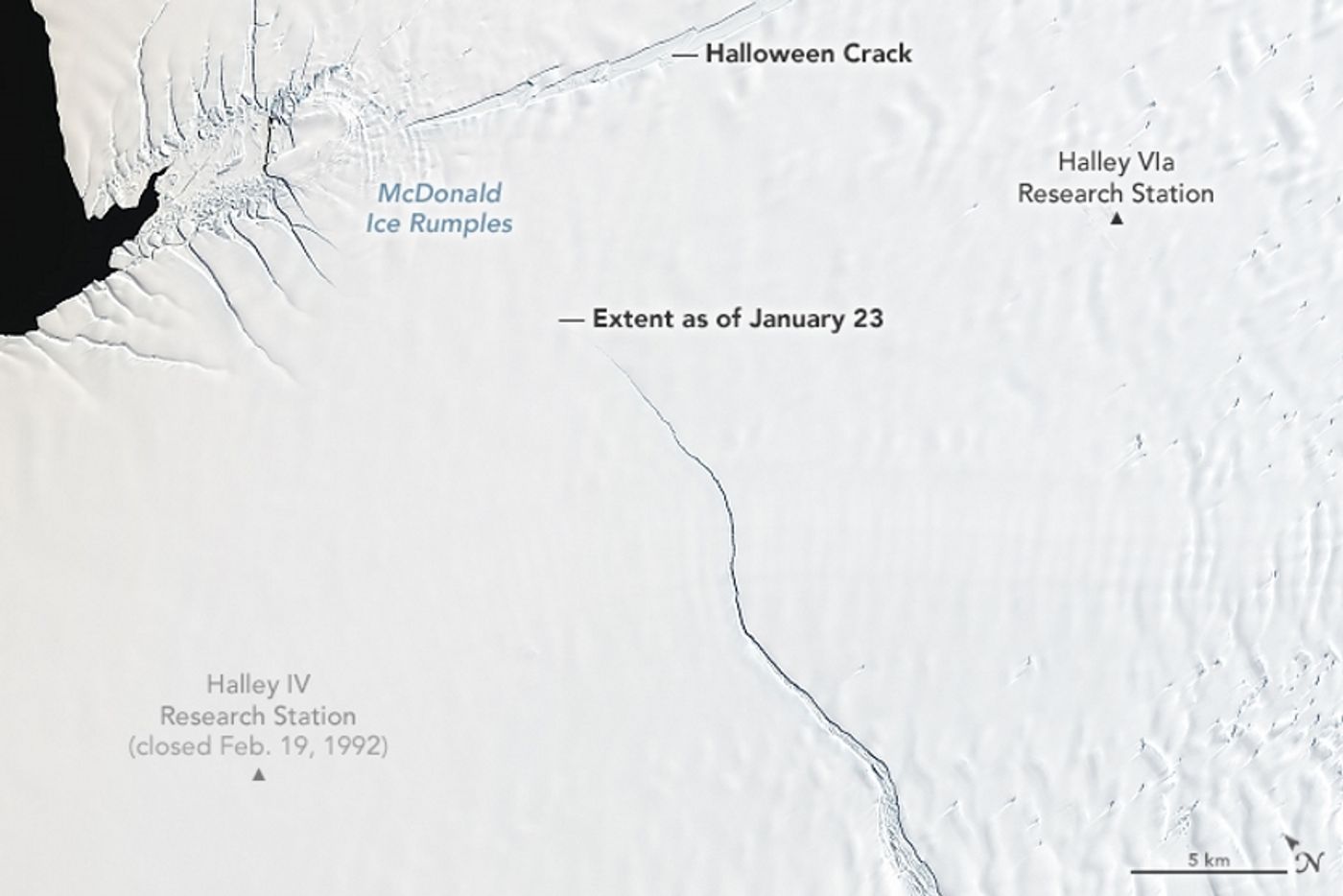Iceberg Twice the Size of NYC on the Verge of Calving
An iceberg, roughly twice the size of New York City, will break off western Antarctica’s Brunt Ice Shelf at any time now, according to recent reports from NASA Scientists. They’ve been diligently monitoring two significant rifts in the shelf that are heading towards each other. Once they intersect, an iceberg estimated to be about 1700 square kilometers (660 square miles), will break off the shelf and enter the sea.
This calving event will be Brunt Ice Shelf’s largest break since records began in 1915. Although massive, this iceberg will be less than one-third of the size of the one that broke off of Larsen-C ice sheet in 2017. There is a chance that the ice shelf will collapse, yet remain in contact with the land underneath. The extent of the collapse will depend on the movement of the chasm around an area known as the McDonald Ice Rumples.
British Antarctic Survey’s Halley Station closed for the 2019 Antarctic winter due to the instability of the shelf. Halley station is an essential location for Earth, space, and atmospheric research. The entire station was forced to relocate in 2017, away from the growing crack.
The Brunt Ice Shelf is considered the most closely monitored area on the Antarctic continent, tracked by at least five agencies. Chasm 1, referred to as such because it extends from the shelf surface to the ocean, appeared more than 35 years ago. It remained stable until 2012, when it started accelerating up to 4 kilometers (2.5 miles) per year. The second crack—called the Halloween Crack—was first observed in late October 2016. Latest reports showed the two rifts less than 3 miles apart.
Many iceberg calving events in recent years have been attributed to climate change and the resulting higher water and atmospheric temperatures. This region of Antarctica, however, has not been experiencing such rises in temperature.
Iceberg calving is a normal phenomenon, but scientists are concerned about the future stability of the shelf. Because the structure of the Brunt Ice Shelf differs from other Antarctic ice shelves, scientists are not entirely familiar with the changes in this area. NASA and University of Maryland, Baltimore Glaciologist Chris Shuman told the NASA Earth Observatory team, “We don’t have a clear picture of what drives the shelf’s periods of advance and retreat through calving. The likely future loss of the ice on the other side of the Halloween Crack suggests that more instability is possible, with associated risk to Halley [Station].”
Sources: Independent, NASA Earth Observatory, British Antarctic Survey









